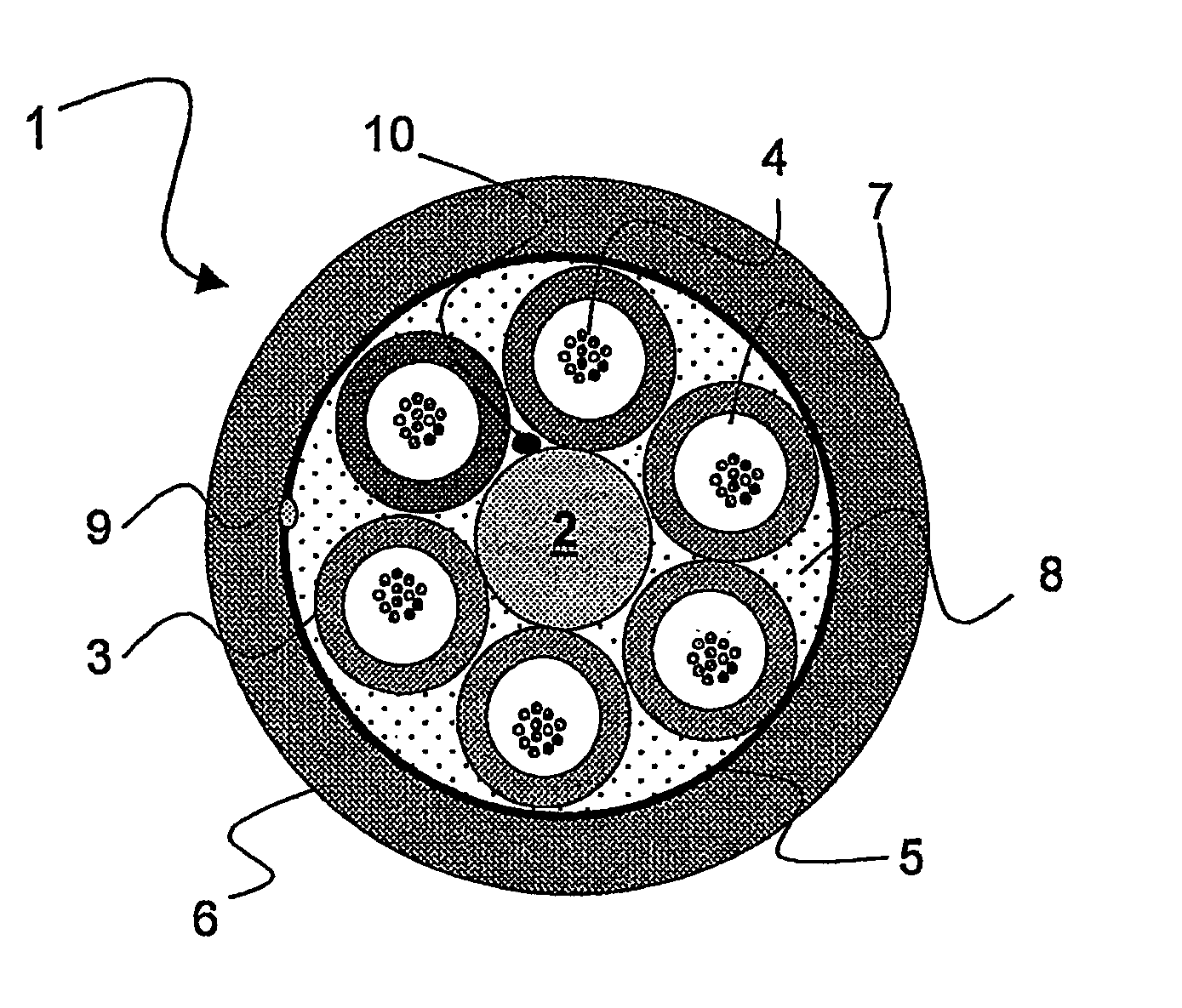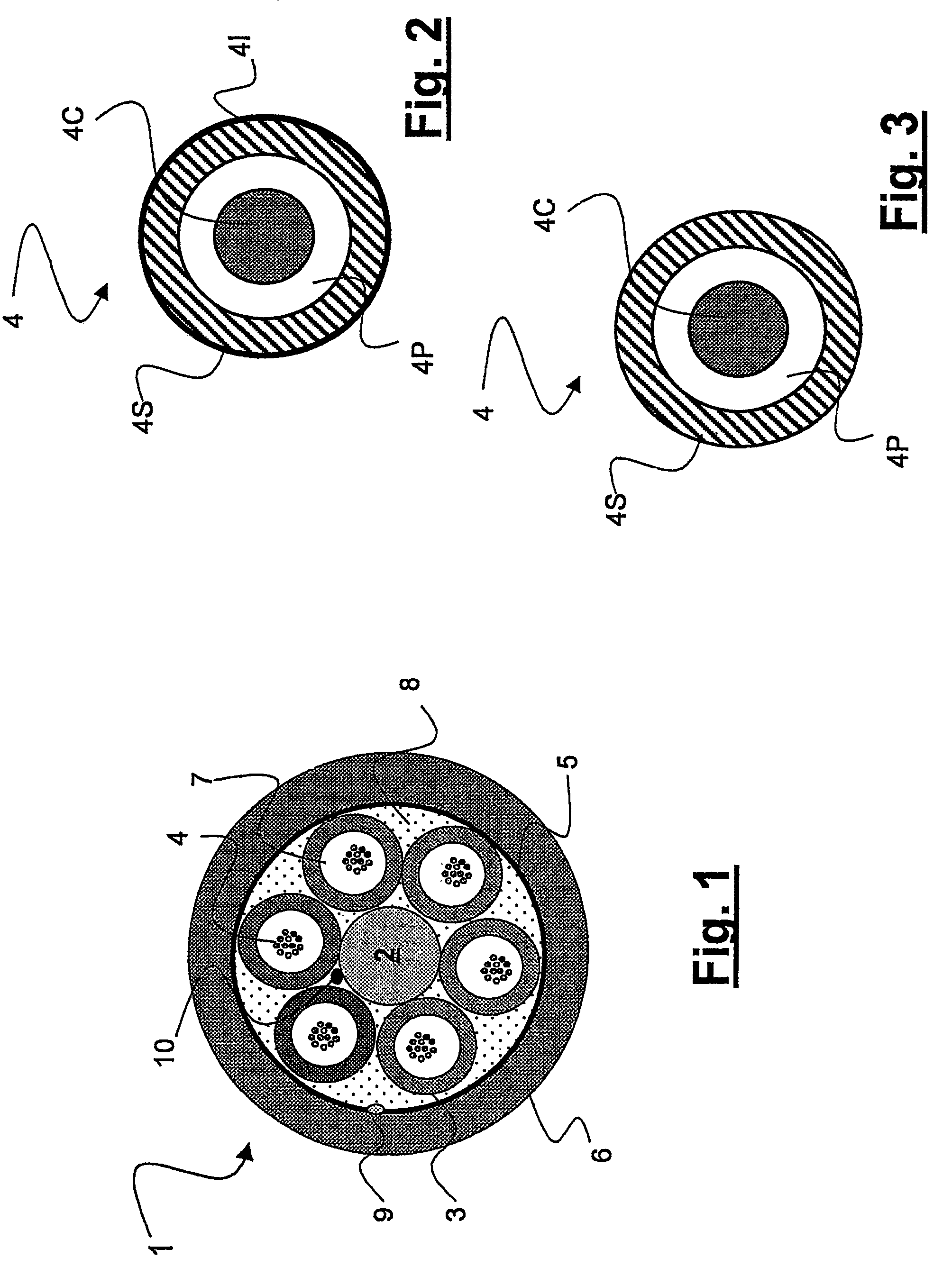Telecommunication loose tube optical cable with reduced diameter
a loose tube, optical cable technology, applied in the direction of optics, instruments, optical light guides, etc., can solve the problems of insufficient utilization of technical and economic advantages, inability to optimize the number of fibres of terrestrial cables with medium or high potentiality, and insufficient installation of similar cables
- Summary
- Abstract
- Description
- Claims
- Application Information
AI Technical Summary
Benefits of technology
Problems solved by technology
Method used
Image
Examples
Embodiment Construction
[0039]With reference to FIG. 1, a multi loose tube (MLT) cable 1 comprises: a central strength member 2; a number of tubes 3 arranged around the central strength member 2 and housing loosely placed optical fibers 4; a mechanical reinforcing layer 5 (if necessary for cable tensile load withstanding), for example a thread made of glass or of an aramid material, arranged around the tubes; and a protective outer jacket 6 surrounding the reinforcing layer.
[0040]The tubes 3 containing the optical fibers 4 are typically stranded around the central rod 2 according to an unidirectional helix or a bidirectional (SZ) helix. The stranded tubes 3 and the central rod enclosed therebetween define a so called “stranded tube core”. Preferably, the tubes 3 are filled of jelly 7 or the like. Alternatively, the tube 3 may be filled with igro-expanding agents, such as powders or filaments. Similarly, the interstices between central rod 2, tubes 3 and outer jacket 6 are filled of igro-expanding agents 8,...
PUM
 Login to View More
Login to View More Abstract
Description
Claims
Application Information
 Login to View More
Login to View More - R&D
- Intellectual Property
- Life Sciences
- Materials
- Tech Scout
- Unparalleled Data Quality
- Higher Quality Content
- 60% Fewer Hallucinations
Browse by: Latest US Patents, China's latest patents, Technical Efficacy Thesaurus, Application Domain, Technology Topic, Popular Technical Reports.
© 2025 PatSnap. All rights reserved.Legal|Privacy policy|Modern Slavery Act Transparency Statement|Sitemap|About US| Contact US: help@patsnap.com



